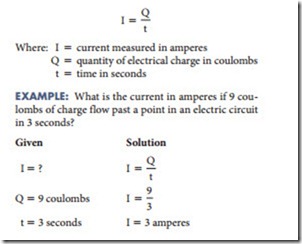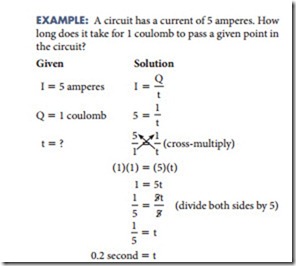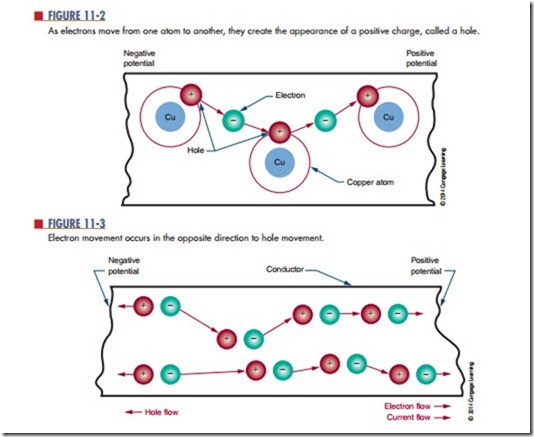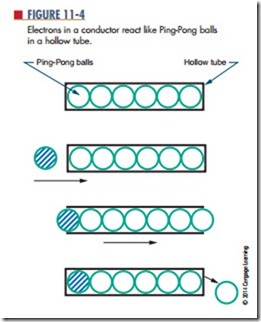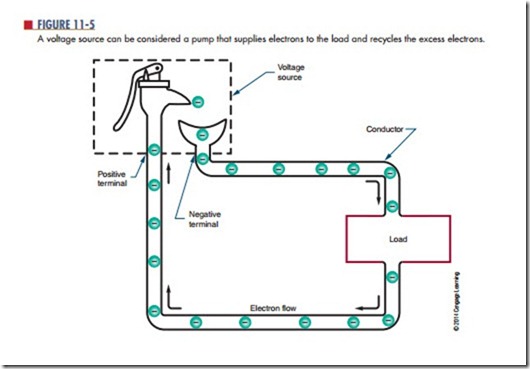current Flow
An electric current (i) consists of the drift of electrons from an area of negative charge to an area of positive charge. The unit of measurement for current flow is the ampere (A). An ampere represents the amount of current in a conductor when 1 coulomb of charge moves past a point in 1 second. The relationship between amperes and coulombs per second can be expressed as follows:
Electrons, with their negative charge, represent the charge carrier in an electric circuit. Therefore, electric current is the flow of negative charges. Scientists and engineers once thought that current flowed in a direction opposite to electron flow. Later work revealed that the movement of an electron from one atom to the next created the appearance of a positive charge, called a hole, moving in the opposite direction (Figure 11-2 and Figure 11-3). Electron movement and current were found to be the same.
If electrons are added to one end of a conductor and provision is made to take electrons from the other end, an electric current flows through the conductor. As free electrons move slowly through the conductor, they collide with atoms, knocking other electrons free.
These new free electrons travel toward the positive end of the conductor and collide with other atoms. The
electrons drift from the negative to the positive end of the conductor because like charges repel. In addition, the positive end of the conductor, which represents a deficiency in electrons, attracts the free electrons be- cause unlike charges attract.
The drift of electrons is slow (approximately an eighth of an inch per second), but individual electrons ricochet off atoms, knocking other electrons loose, at the speed of light (186,000 miles per second). For example, visualize a long, hollow tube filled with Ping-Pong balls (Figure 11-4). As a ball is added to one end of the tube, a ball is forced out the other end of the tube. Although an individual ball takes time to travel down the tube, the speed of its impact can be far greater.
The device that supplies electrons from one end of a conductor (the negative terminal) and removes them from the other end of the conductor (the posi- tive terminal) is called the voltage source. It can be thought of as a kind of pump (Figure 11-5).
Questions
1. Define electric current.
2. What is the unit for measuring flow?
3. What is the relationship among current, coulombs, and time?
4. What is the current if 15 coulombs of charge flow past a point in a circuit in 5 seconds?
5. How long does it take for 3 coulombs to move past a point in a circuit if the circuit has amperes of current flow?
What makes electrons move through a conductor in only one direction?
